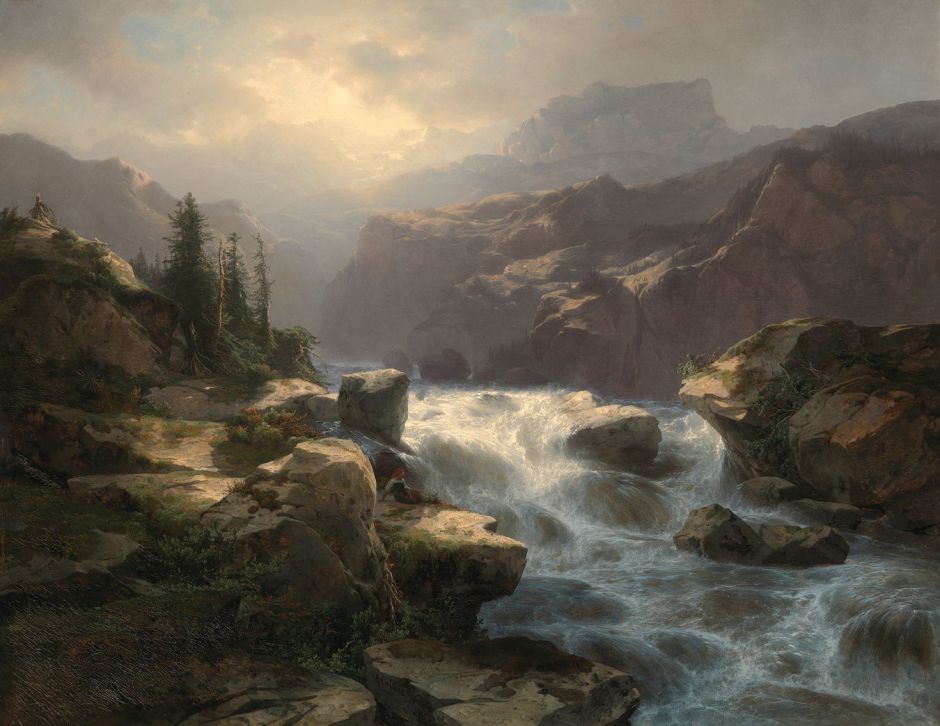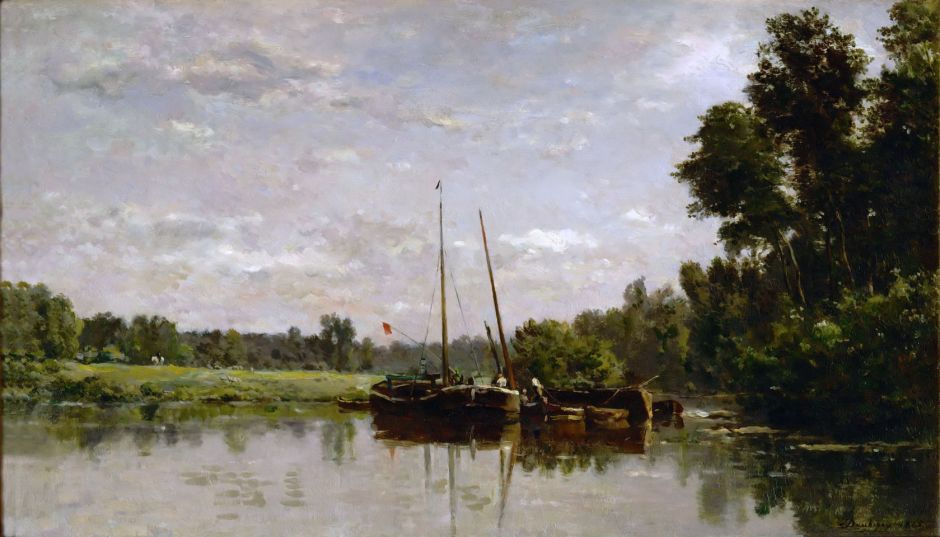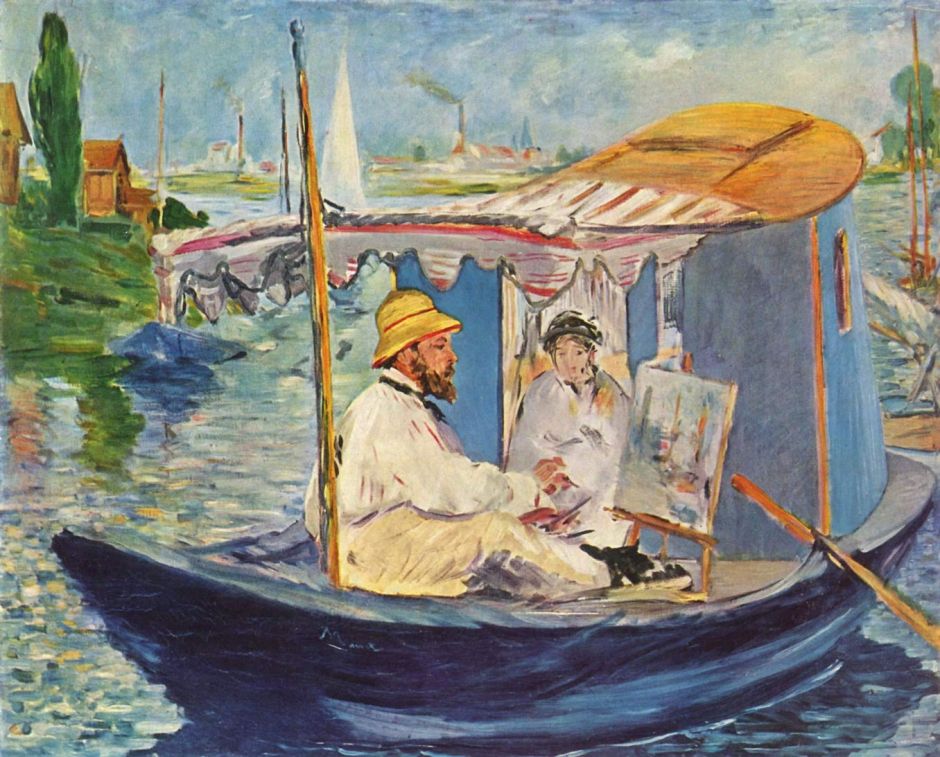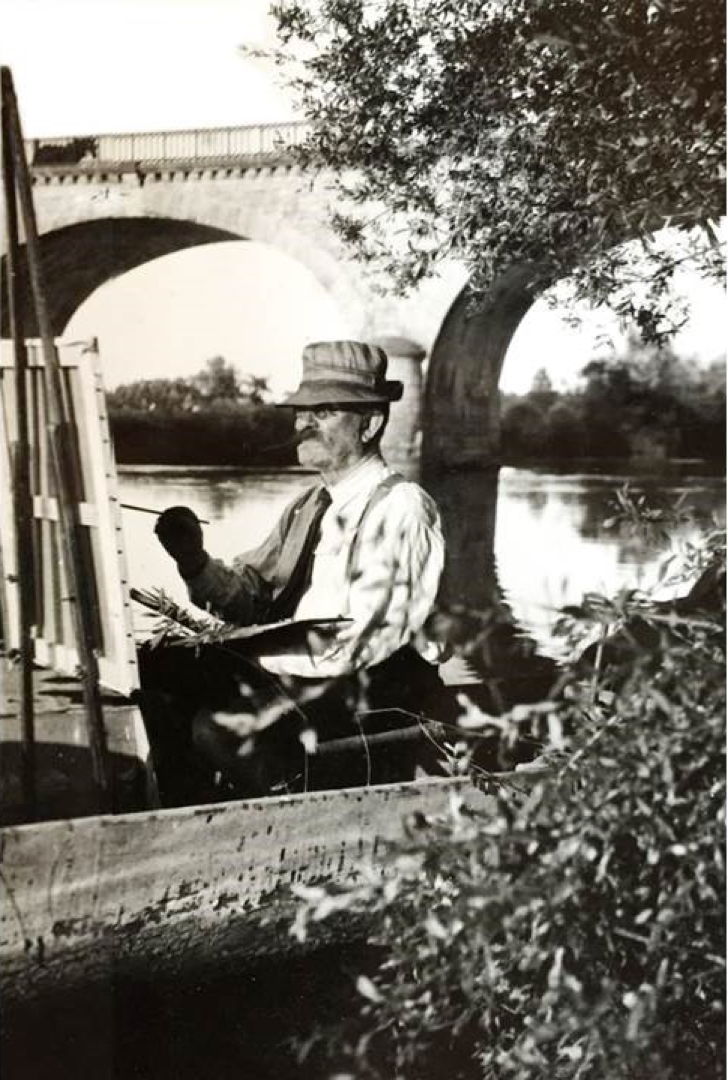There are several good candidates for the letter r in this alphabet of landscape painting. I have already looked at reflections when considering Lakes, and devoted two articles here and here to repoussoir. Those leave the letter r free for rivers.
Initially, rivers were incidentals, and only became central when they contributed to the awe inspired by rugged and mountainous landscapes, such as Alexandre Calame’s ‘Swiss horrors’.

His Waterfall from Handeck toward Grimsel was painted near the Grimsel pass, an area shown in his 1851 Souvenir of Handeck.
By the middle of the nineteenth century, influential landscape painters including Charles-François Daubigny were increasingly depicting rivers in their own right, rather than concentrating on their banks.

Daubigny’s Banks of the Seine (1855) marked the start of his long campaign painting the rivers of northern France. To facilitate that, in 1857 he launched a specially built studio boat, anticipating Claude Monet’s later use of a similar floating studio (see below).

Les péniches (Barges) (1865) is another of Daubigny’s well-known river portraits, that became so influential on mainstream French Impressionists, who were just starting their careers at that time.

Alfred Sisley’s Molesey Weir, Hampton Court (1874) shows this weir on the River Thames, and presents an excellent collection of different surface effects of water accomplished by the combination of colour and brushwork.

During that same summer, Auguste Renoir visited Argenteuil, where he painted in the company of both Monet and Manet. The Seine at Chatou (1874) is one of his more vigorously-crafted works, with a water surface similar to those being painted by Sisley at that time.

Later in that century, in September 1889, Paul Signac painted Sunset, Herblay, showing one of the wooded islands that were praised by the writer Georges Lecomte.

The finest painting of the lower reaches of the River Seine must be Henri Harpignies’ breathtaking watercolour View of the Seine at Rouen, which I believe shows the view from Bonsecours, to the south-east of the city, looking north-west into a summer sunset.
It was the Norwegian artist Frits Thaulow who devoted much of his career to depicting optical effects on the surface of rivers.

Thaulow seems to have discovered this theme by 1883, when he painted this scene of Winter at the River Simoa. A lone woman, dressed lightly for the conditions, is rowing her tiny boat over the quietly flowing river, towards the tumbledowns on the other side. The surface of the river shows the glassy ripples so common on semi-turbulent water, and the effect on the reflections is visibly complex. The distant side of the river is also partly frozen, breaking its reflections further.

Thaulow not only explored the optics of water reflections, but in his Spring Thaw from 1887 includes an overall softness throughout the painting, capturing the strangeness of such scenes in early spring.

In 1894, Thaulow travelled across northern Italy to Venice, where he paused to paint The Adige River at Verona. This shows the five arches of the Ponte della Pietra, with the Duomo of S. Maria Matricolare to the left, and to the right the bastion of S. Giorgio standing proud against the horizon.

Soon after Thaulow settled to live his final years at Beaulieu, he found form with the magnificent river surface and lighting of La Dordogne (1903).

Although Gustave Caillebotte didn’t make formal series of views that became such a feature of the art of Monet and Pissarro, in the mid-1880s he painted several views of the modern bridges over the River Seine near Argenteuil. The Bridge at Argenteuil and the Seine (1885) is Impressionist in style, with its broken water surface.

Caillebotte’s Rain on the Yerres (1875) is an unusual study of the construction of a reflective water surface using projected circles.
Several artists followed Daubigny’s lead in painting rivers from their own floating studios.

Édouard Manet’s oil sketch of Claude Monet in Argenteuil from 1874 shows Monet working in his floating studio. His position in the boat appears relaxed, but would have become uncomfortable if maintained for long, as he would have had to keep bending forward to paint, suggesting he might have posed for this painting.

Taken by an unknown photographer, Boat on the Saône shows Jules-Alexis Muenier painting in his small boat on the River Saône not far from his home.

